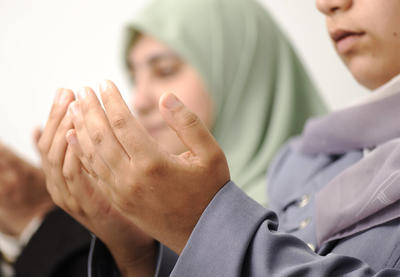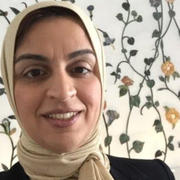I never imagined telling my children we’d have to observe the month of Ramadan under restrictions like those caused by social distancing.
For Muslim students, Ramadan is already always a month when life is different. At times it’s tougher—fasting isn’t always easy. But it is also a time when mosques are filled with people praying to God and listening to the beauty of the Holy Quran. They are giving to one another daily and embracing each other. It’s a time when families get together and break fast at sundown. The life of school, sports, activities and student life slows down, and family is at the center of a student’s world. Ramadan in the United States is a time when the Muslim community unifies in faith. Muslim children, who can at times be stigmatized in public schools, feel inclusion and build bonds during the month’s gatherings.
It was tough to tell my children that this year, we will most likely have our own taraweeh, or night prayer, in our home, with just them and my husband. We will listen to our community imam live stream prayers. We will break our fast as a family while talking to others over FaceTime. I hope that at least we can have Eid al-Fitr prayer together as a community, but in these unprecedented times, I can’t really say that and make a false promise to my kids. It’s not in my hands. We will work hard to continue the spirit of Ramadan. If we still have to social distance by the end of May, we will do what we can to bring the joy of Eid al-Fitr to our home.
As an American-born Muslim educator who has been through the public school system as a student, teacher and administrator, I hope that my colleagues in education will take this time to remember our community and connect with us. It means a lot to students and families under normal circumstances when a non-Muslim teacher remembers that we are observing Ramadan. A “Ramadan Mubarak” email from a non-Muslim teacher makes me feel great. And when a school asks how to support my fasting eighth grader, I more than appreciate it. Especially now, that connection will mean so much.
If you want to support the Muslim students and families in your community this year during Ramadan, here’s how you can start.
Connect With Students
- Do what you can to communicate with your students. Use technology accessible to them to connect. Call them, or use FaceTime or Zoom. Send a letter with a self-addressed stamped envelope. Ask how fasting is going or how their family is doing.
- If you have a classroom or school that has several Muslim students or even a Muslim Students Association, set up a supervised Flipgrid so they can wish each other well during Ramadan or have their own “virtual iftar dinner” at sunset.
- Plan a read-aloud of texts about Ramadan. Some stories students might enjoy are Night of the Moon: A Muslim Holiday Story, written by Hena Khan and illustrated by Julie Paschkis; Lailah’s Lunchbox: A Ramadan Story, written by Reem Faruqi and illustrated by Lea Lyon; and Moon Watchers: Shirin’s Ramadan Miracle, written by Reza Jalali and illustrated by Anne Sibley O’Brien. The read-aloud can happen via Zoom or by phone. You can even send the book home with a note of good wishes.
- Teach about Ramadan. PBS has resources you can easily adapt for online learning. For those working on paper, twinkl.com has many activities that are printable and related to Ramadan.
- Check with your students about their workloads. During times of distance learning in general, we should not overwhelm them. Have conversations with children during Ramadan about when their work can get done. Avoid early morning online “real-time” instruction if you can.
Connect With Families
- It’s easy to find Ramadan and Eid cards online. If you have families who celebrate Ramadan, taking the time to send a card in the mail sends a strong message.
- Depending on your relationship with families, ask whether they are comfortable with you joining them on FaceTime during iftar dinner, and talk to them during a meal.
- Families break their fast with dates. If you want to send something tangible, a box of Medjool dates is a thoughtful gift.
Allow Students to Educate Peers
- Let students be “journalists” and write about Ramadan during the pandemic. Find a way to help them publish their work online (with parent or guardian permission) or present it to their peers.
- Let students give virtual presentations about Ramadan or write a letter for you to share with the class.
- If your school does a virtual assembly, ask your administration if a part of it can be dedicated to explaining the month of Ramadan. Students and their families can help you create a short presentation.
Everyone needs support during this time, and many families will appreciate any gesture, big or small, during the month of Ramadan. Having Ramadan under social distancing may be difficult for families and students this year, but you can help assure that COVID-19 will not dim the Ramadan lights.
For more on supporting students through distance learning, visit TT’s resource collection “Supporting Students Through Coronavirus.”

